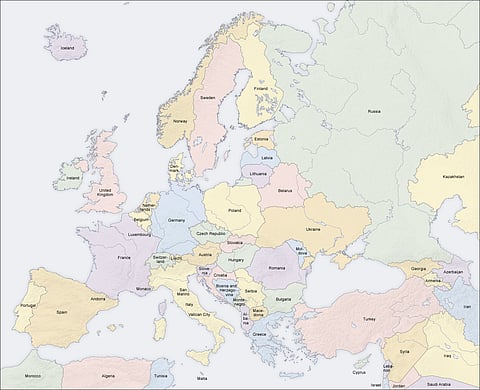
- NEWS
- the EDIT
- COMMENTARY
- BUSINESS
- LIFE
- SHOW
- ACTION
- GLOBAL GOALS
- SNAPS
- DYARYO TIRADA
- MORE

With summer fast approaching, Europe is once again topping the travel wish list for many Filipinos. From the romantic streets of Paris to the scenic fjords of Norway and the ancient ruins of Rome, the continent offers a dream itinerary. The good news is, you can explore 27 European countries with just one visa: the Schengen Visa.
Before you pack your bags, here’s your comprehensive 2025 guide on how Filipinos can apply for a Schengen Visa — along with tips to make your application process smoother and more successful.
A Schengen Visa allows travelers to visit any or all of the 27 countries within the Schengen Area for up to 90 days within a 180-day period. This includes popular summer destinations like France, Italy, Spain, Greece, and Switzerland — all without the hassle of applying for separate visas for each country.
Filipino passport holders must obtain a Schengen Visa before traveling to Europe for tourism, business, family visits, or short-term studies.
Here’s the full list of Schengen countries open to Filipino travelers:
Austria, Belgium, Croatia, Czech Republic, Denmark, Estonia, Finland, France, Germany, Greece, Hungary, Iceland, Italy, Latvia, Liechtenstein, Lithuania, Luxembourg, Malta, Netherlands, Norway, Poland, Portugal, Slovakia, Slovenia, Spain, Sweden, and Switzerland.
Here’s a checklist of the basic documents you’ll need:
Valid Philippine passport – Must be valid for at least 3 months beyond your intended stay and issued within the last 10 years.
Accomplished visa application form – Available online from the specific embassy or VFS Global.
Two recent passport-sized photos – Must meet Schengen photo standards.
Proof of travel – Roundtrip flight itinerary, including all internal flights.
Accommodation confirmation – Hotel bookings or an invitation from a host.
Travel health insurance – With a minimum coverage of €30,000.
Proof of financial capacity – Bank statements, employment certificate, or sponsor affidavit.
Visa fee payment – €80 (around ₱4,600) for adults; reduced for minors.
Cover letter – Stating your travel intent, itinerary, and personal details.
According to SchengenInsuranceInfo.com, in addition to providing coverage of at least €30,000, Schengen travel insurance must also be valid in all Schengen countries, cover the full duration of stay, and include medical repatriation, emergency care, and hospitalization.
Additional documents may be required depending on your employment status, age, or purpose of travel.
Follow these steps to apply for your Schengen Visa:
Determine your main destination – Apply through the consulate or embassy of the country where you’ll stay the longest (or your first entry point).
Book an appointment – Via the embassy website or an accredited visa application center like VFS Global or BLS Philippines.
Prepare and submit your documents – On the appointment date, submit your documents. Some embassies may require a personal interview and biometric data (fingerprints).
Pay the visa fee – At the application center or online.
Wait for processing – The standard processing time is 15 working days but may take up to 30 days during peak travel seasons.
Track your visa status – Via the visa center's portal.
Collect your passport – Once approved, claim your passport with the visa sticker or request delivery via courier (depending on the embassy).
The standard cost for an adult applicant is €80, which is around ₱4,900, depending on the exchange rate. For children aged 6 to 12, the visa fee is reduced to €40 (roughly ₱2,400), while kids under 6 can apply for free.
Note: If you apply through a third-party visa center like VFS Global or BLS International, you will also need to pay a service fee, typically between ₱1,000 and ₱2,000. These fees are non-refundable, even if your application is denied, so be sure to double-check the rates before applying.
You can submit your visa application as early as six months before your intended trip, and at least 15 days before departure. For summer travel, it’s ideal to apply one to two months in advance to avoid delays.
Double-check embassy-specific requirements – Some embassies may request notarized documents or translations.
Avoid fixers or agents – Never trust agents promising “guaranteed approval.” Only deal with legitimate visa centers.
Ensure consistency in your documents – Inconsistencies can lead to rejections.
Book your appointment early – Slots are limited, especially during summer.
Securing a Schengen Visa as a Filipino traveler is definitely within reach — as long as you’re well-prepared. Whether you dream of strolling along the Seine in Paris, island-hopping in Greece, or indulging in gelato in Italy, the first step is securing that essential visa.
